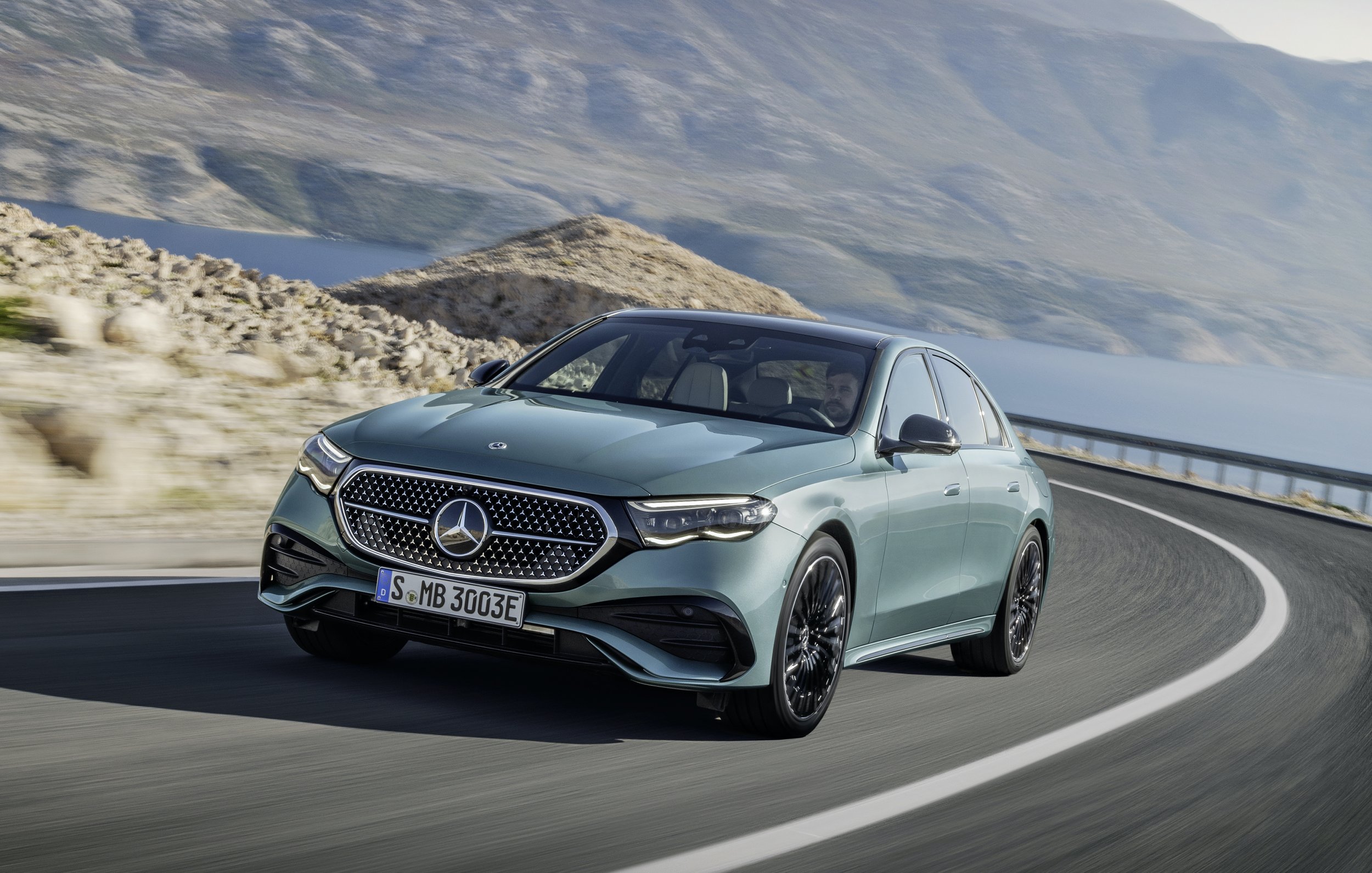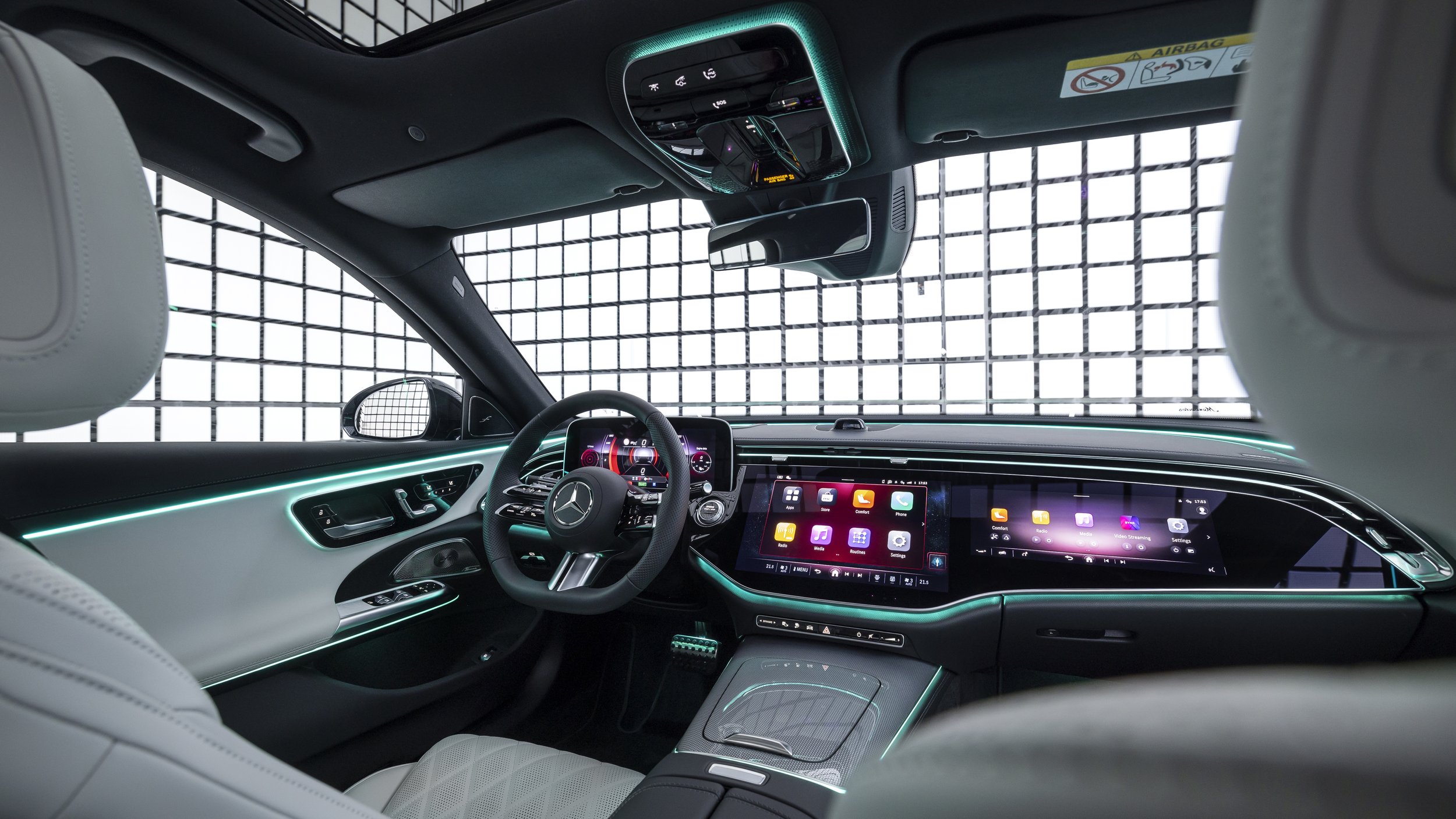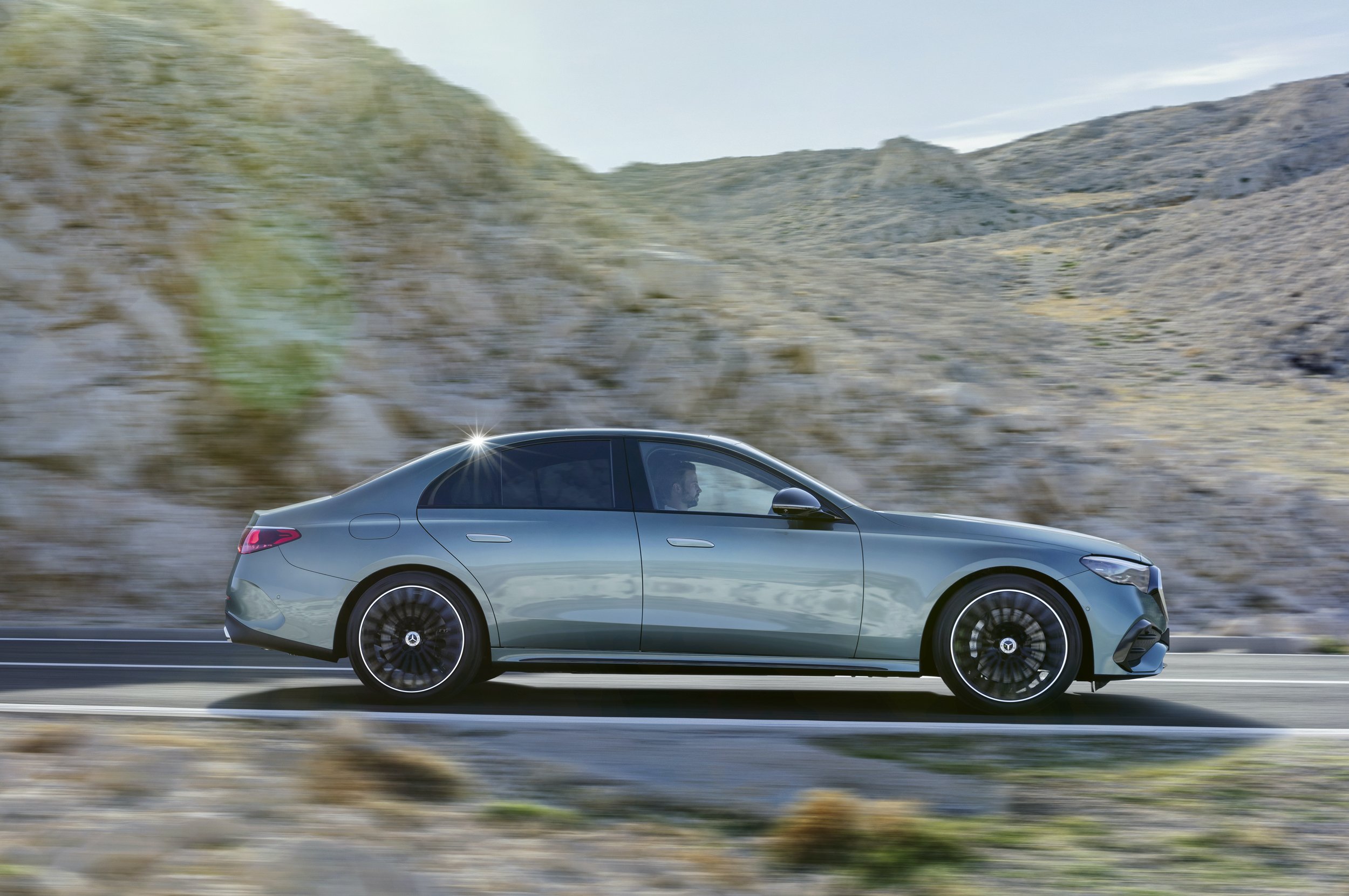New E-Class unveiled, NZ plan yet to be shared
/Low CO2 electric-assisted four-cylinder power for launch models. Tik-Tok too.
COMMITMENT to an electric future is why Mercedes-Benz developed the wholly battery-compelled EQE – understanding that the world in its entirety isn’t yet ready to plug into that level of technology is why it also continues with a more orthodox E-Class.
The latest of those has unveiled overnight, word still to come from the New Zealand distributor in respect to when it lands and in what derivatives.
As expected, the new W214 version offers plenty of choice, though one big step-up for the type that recognises the climate we live in is that all combustion engines are augmented with improved hybrid performance.
Before getting to that, first consider the styling which maintains this medium as a smaller-scale S-Class, with a slightly bulbous grille that can optionally have an illuminated surround and a tapering tail with slim brake lights, rendering with three-pointed star elements.
So, not too conservative then, though in respect to the kerbside presence quite properly the ethos now is that the EQ cars should be less restrained. They’re the future, if not entirely now, after all.
Though the sedan’s shape might seem a little stilted, it is impressively slippery, Benz claiming a drag coefficient of just 0.23 – that’s almost as good as the soap bar-like Hyundai Ioniq 6.
No surprising that the dominant feature of the interior is the latest version of the MBUX digital layout. It is a bit different to that in the C-Class and S-Class in that it uses a separate, standalone driver's instrument screen but integrates the central infotainment screen into the dashboard, rather than being a free-standing tablet-like display.
Want to make the entire dashboard look like one big screen? It can be done. An extra screen in front of the passenger seat is an option that creates a 'superscreen' layout that’s similar in function to the 'hyperscreen' offered in the EQS and S-Class. The passenger-side screen is blocked from the driver's view using angled pixels and an eye-tracking camera, so that it can be used for entertainment streaming.
Techy toys to impress occupants have become a Benz 1010. The E-Class can offer 'sound visualisation' that uses the LED mood lighting to disco-like effect, pulsing in time with whatever music you might be playing. The big screen can run third-party entertainment apps including Angry Birds and the video platform TikTok. The car also has an artificial intelligence system that will learn your routines and automatically pre-set the cabin - temperature, lighting, seat position and heating, stereo etc - as you approach. You can also use your iPhone or Apple Watch as a digital key.
The E-Class is also almost 25mm longer with a 12mm longer wheelbase. This translates to a touch more headroom, an extra 17mm of rear legroom and almost the same elbow room for rear-seat passengers as an S-Class. The the boot now has up to 540 litres of luggage space depending on the version. Do you need reminding that the E-Class has long been the primary choice for Germany’s taxi fleets?
Three of the six engines announced at launch are 2.0-litre four-cylinder petrol plug-in hybrids.
The E300e, which runs rear-drive with all-wheel-drive as an option, uses a turbocharged 2.0-litre petrol engine with 152kW that combines with a 95kW electric motor to produce up to 232kW, with 550Nm of torque. The plug-in hybrid system uses a 25.4kWh battery which, when fully charged, enables a WLTP electric range of up to 115km. The four-wheel-drive version of the E 300e, badged 4Matic, goes for up to 109km on electric power alone. CO2 emissions start from as little as 12 grams per kilometre.
The E400e is all-paw only, hence it badges 4Matic, and uses a more powerful, 188kW version of the same engine, which, combined with the same electric motor, produces system maximums of 283kW and 650Nm of torque. It has the same 109km electric range as the E 300e 4Matic.
Benz still delivers a E200, now with a 152kW petrol four, and an E220d diesel four-cylinder with 147kW. Both engines get mild-hybrid assistance - which includes a compact 17kW electric motor - and CO2 emissions start from 125g/km for the diesel, or 144g/km for the petrol.
The car rides on five-link rear suspension, with air springs with continually adjustable damping optional. This also keeps the car level and, at above 120kmh, it lowers the car by around 16mm for better efficiency and a lower centre of gravity.
It achieves same rear-wheel-steering system used by the S-Class, which turns the rear set by up to 4.5 degrees at low speed to cut almost a metre off the turning circle and, at pace, can turn up to 2.5 degrees for added stability.
Autonomous emergency braking, active cruise control, lane keeping assistance and a reversing camera are standard and there's also a driver attention warning system that uses eye-tracking. Speaking of cameras, it can be fitted with a selfie cam that Mercedes says can be used for Zoom meetings, while on the move.
The standard seat trim is all about eco-good. Benz has gone to using seat upholstery made of undyed alpaca wool combined with recycled material, certified as being C02-neutral.




















